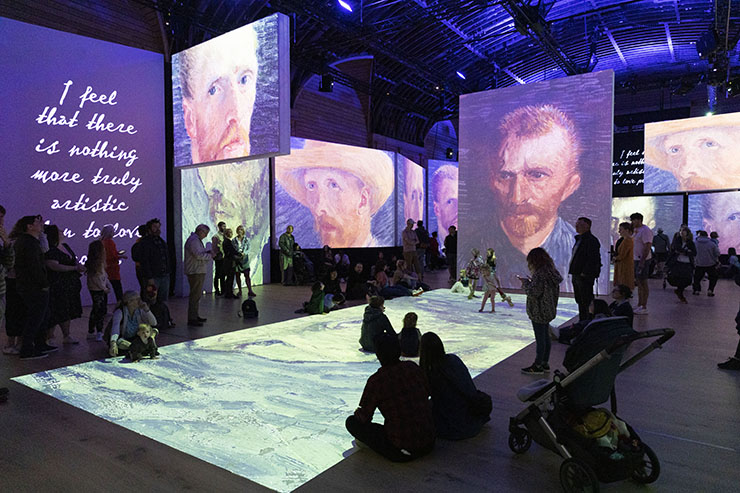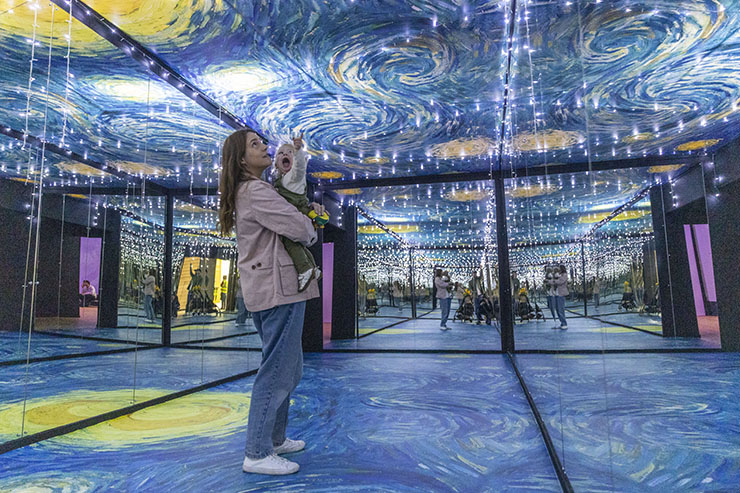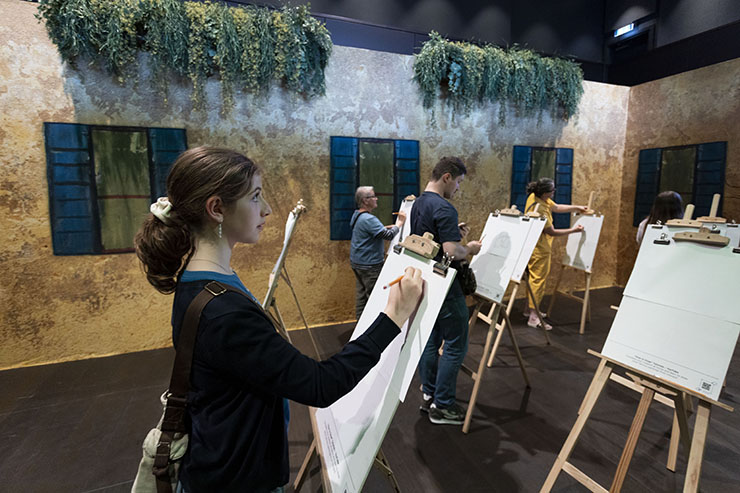Van Gogh Alive is an immersive art experience taking visitors on a journey through the life and works of the troubled painter Vincent Van Gogh. The multi-sensory experience has already been shown in 85 cities worldwide, including Manchester, Edinburgh and London, and now comes to the newly refurbished Brighton Corn Exchange and Studio Theatre, touted as one of the crowning spectacles of this year’s Brighton Festival.
The exhibit was created by Grande Experiences, who have given the same expansive treatment to the works of Monet, Dali and Da Vinci. Their aim is to offer visitors a fresh approach to experiencing art, letting people engage with the masterpieces of the past up close. The idea is that you’ll be enveloped by the world of a famous painting rather than having to tiptoe around a silent gallery craning your neck to have a glance at the actual thing, leaving underwhelmed and short-changed.
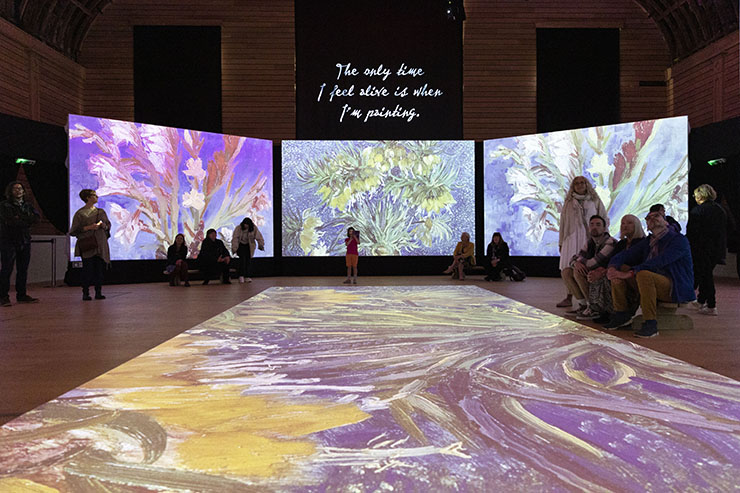
In many ways it’s an attempt to inject a new relevance into our collective relationship with art history. There is an increasing trend for modern art and theatre to have some element of the ‘immersive’ in its remit. Major exhibitions come with an expectation of interactivity and play. People flock to the Turbine Hall at the Tate Modern to swing on swings or slide down slides, and if it’s not something that they can directly take part in, then it at least needs to provide an opportunity for a striking selfie.
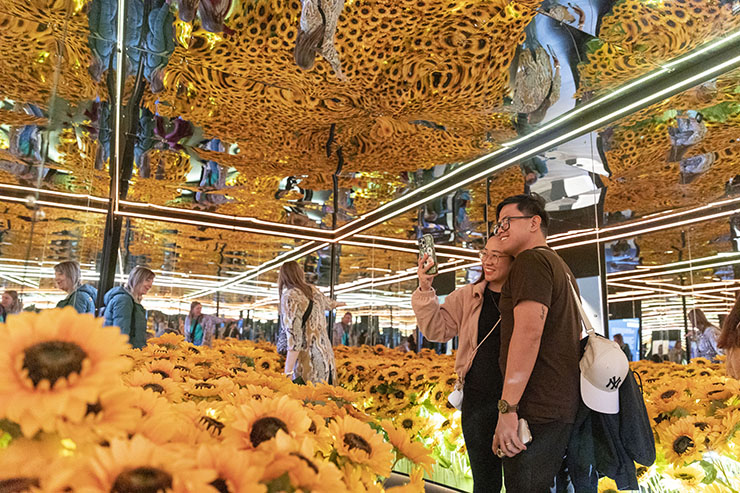
The Van Gogh Alive experience seems to be consciously geared towards this end. Taking obvious influence from the stunning infinity mirrors of Yayoi Kusama that have formed the background for many an Instagram post, there are two rooms in this installation that use mirrors to multiply the most famous Van Gogh paintings. A side room stuffed full of plastic sunflowers reflected in mirrors covering the walls and ceiling creates the illusion of a vast field of sunflowers. It could be seen as a cynical commodification of the brand of Van Gogh, reducing his work to the symbol of that flower, ignoring the fact that the sunflower only becomes vital through his brushstrokes. The starry skies room is even more questionably conceived: strings of fairy lights flashing on and off into infinity with the skies of the famous painting merely acting as a carpet pattern.
In the main area the works themselves are given more space to breathe. Vast screens are placed around the hall and projected onto them is a slideshow of Van Gogh’s paintings, showing the shifting styles of his short career as he developed the vibrant impressionistic colours of his most famous works. There’s a biographical trajectory to the story, the black and white landscapes of his earlier work animated with birds flitting across and a steam train chugging by from one screen to another, colour gradually enlivening the fields.
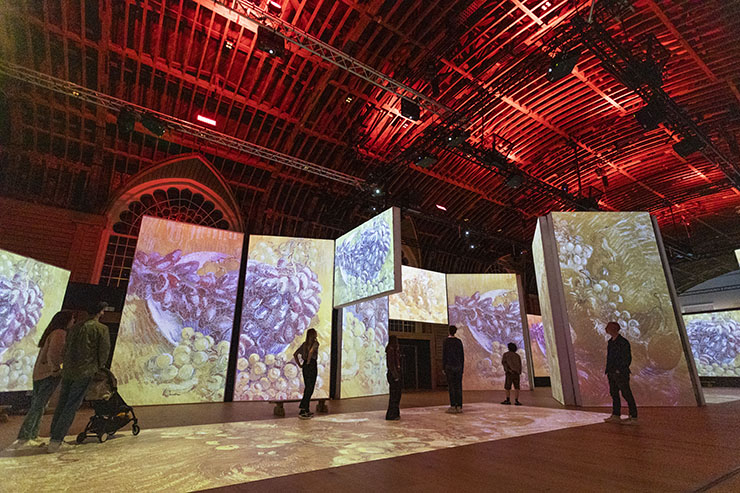
It’s a feast for the eyes, each screen shifting at a slightly different pace, letting us zoom in on different parts of each painting. We can see the whites of the eyes of the people in pieces like The Potato Eaters and The Dance Hall in Arles and get a sense of the rough texture of his brushstrokes. What we also get is a sense of obsession as when all his flower paintings are shown one after the other. Considering his career was only ten years long, he was a prolific painter and the instability of his mental state comes across in the monomania of the subject matter.
The scope of the art displayed is perhaps the most enlightening aspect of the show. We can experience the entirety of Van Gogh’s output here. But what it amounts to is most reminiscent of a fairly basic documentary, with very little curatorial input. Even the music played is the most generic classical music, adding barely anything to the conversation of one of the most complex figures in art history.
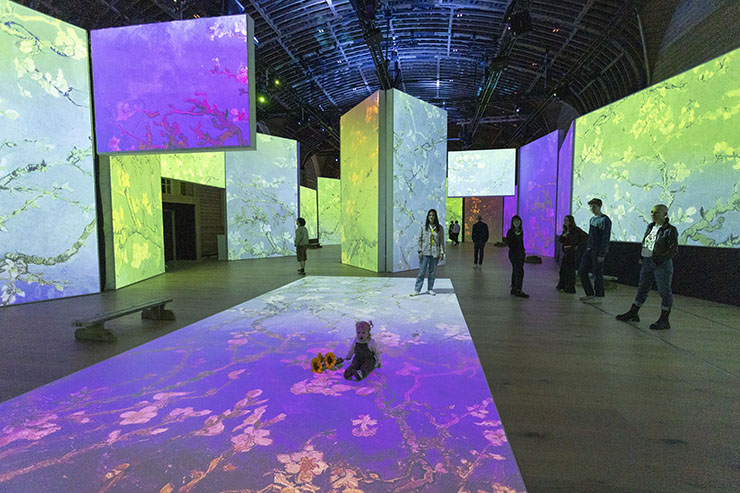
The exhibit opens with biographical info on the artist, the different eras of his life and the stories behind his most famous works, with reproductions of the pieces to whet your appetite for the later immersion. Later on there is also a life-size reproduction of Van Gogh’s Bedroom in Arles painting, complete with a crazily perspectivised bed, which is perhaps the most fun piece of the show.
Unfortunately there is a rather sad commercial aspect to the whole thing, complete with a contrived exit through the gift shop where one can buy, alongside mugs and tote bags, the plastic sunflowers featured in the mirror room. The exhibit could provide a fun afternoon’s entertainment for the family, where kids can run around and at one point have the opportunity to have a go at sketching their own masterpiece. And as an introduction to Van Gogh and his work, it has the potential to ignite the imagination of a newcomer. But the absence of any real art is a palpable shame. Though it may not be the most dopamine-stimulating experience to walk around an austere art gallery, it’s impossible to beat the magic of seeing the original of a painting that you’ve only ever seen reproduced on a screen or in a book.
Van Gogh Alive is on until 3rd September 2023
Words by Thom Punton
Photos by David McHugh

